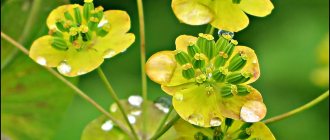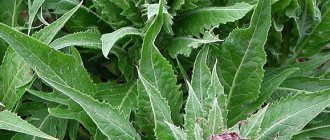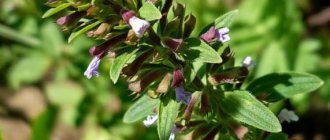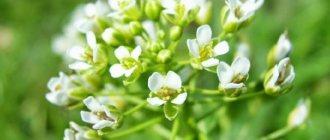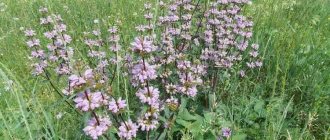Description of the plant
Astragalus is a genus of annual or perennial plants of the legume family. Most often, representatives of Astragalus are grass or subshrubs. Occasionally you can find a bush. The central rod is dense and grows deep into the ground. The leaves are small in size, oblong, lanceolate. They gather in 10-15 pairs.
The inflorescences, collected in groups of 10 small bud-shaped flowers, are white, purple, yellow, and variegated ones are less common. Flowering begins in late spring, fruiting occurs as early as the next month. Like other plants of the Legume family, Astragalus has round fruits.
The genus contains more than 1600 species. Most exhibit medicinal properties, but only some varieties are used for treatment.
Diabetes
Astragalus is a herb that is beneficial for diabetics. According to a recent study, the polysaccharide found in it lowers blood glucose levels and significantly increases the body's sensitivity to insulin.
The content of saponins, flavonoids and other polysaccharides - substances that are effective in compensating for diabetes, both type 1 and type 2, is also important in the treatment of diabetes.
Article for you:
Medicinal properties of budra herb and its use in folk medicine
Due to its anti-diabetic effects, astragalus has the potential to become a full-fledged cure for diabetes (lrpuja juice will help) in the future.
For diabetes, it is recommended to use a decoction of the plant.
Decoction for diabetics
Boil 3 g (1 tsp) of root for 15 minutes in 1/4 liter of water. After infusing until slightly cooled, add 1 tsp. honey and lemon juice. Drink 2-3 times a day. Course – 2 weeks. Break – 1 week.
To improve the healing properties of the plant, you can mix it with other herbs - ginseng, licorice or echinacea.
Medicinal properties
This plant has a number of beneficial properties for the body, which are actively used in herbal medicine and classical medicine.
- Bringing hormonal levels back to normal;
- Dilation of capillaries and blood vessels;
- Normalization of blood circulation and pressure;
- Maintaining vigor in the elderly;
- Beneficial effects on the nervous system;
- Elimination of kidney and liver diseases.
The wide range of influence of Astragalus exceeds even the capabilities of ginseng.
Chemical composition and medicinal properties of Astragalus wooliflora
The benefits of a plant directly depend on its biochemical composition. The plant has a high concentration of essential amino acids:
- valine – responsible for the growth and formation of the structure of muscle fibers;
- isoleucine – corrects the hemoglobin level and takes part in the functioning of the hematopoietic system, and also stimulates the activity of the myocardium and the blood flow system;
- tryptophan is responsible for human hormonal levels and also increases the synthesis of the “happiness hormone”;
- aspartic acid – is responsible for the functioning of brain cells and organs of the endocrine system.
Beneficial properties of aspartic acid
The composition also includes the following components:
- flavones and flavonoids;
- resinous and essential oil compounds;
- polyphenols;
- glycosidic components and pectins;
- tannins and coumarins.
Vitamin composition of the plant:
- C – activates the activity of the immune system, takes an active part in hematopoiesis;
- PP – strengthens and increases the elasticity of arterial and capillary membranes;
- E is a natural antioxidant that prevents aging of body cells;
- B5 – calms the psyche, corrects the functioning of the nervous system;
- B6 – normalizes metabolic processes, especially protein metabolism;
- B9 – folic acid prevents the development of vitamin deficiency and anemia;
- B12 – improves intellectual abilities and brain function, has a positive effect on liver cells.
Mineral composition:
- potassium and magnesium normalize the functioning of the myocardium and blood flow system, and also prevent the formation of cholesterol tumors, which cause heart attacks and strokes;
- sodium – normalizes the activity of the digestive organs;
- calcium is the main building material of bones, and also removes waste, toxic elements and radionuclides from the body;
- phosphorus is necessary for metabolism;
- zinc – regulates the activity of the reproductive organs;
- copper and iron are the main components in the functioning of the hematopoietic system.
The composition also includes such trace elements as silicon and aluminum, cobalt and chromium, selenium and molybdenum, which ensure the balanced functioning of all human organs.
Astragalus is used in traditional and alternative medicine for:
- disorders in the musculoskeletal system;
- systemic and cardiac pathologies;
- anemia and vitamin deficiency;
- dysfunction of the liver and thyroid gland;
- nephrological pathologies;
- diabetes and pancreatic pathologies;
- bronchial asthma and respiratory diseases;
- chronic fatigue syndrome and disorders of the nervous system;
- psoriasis, dermatological pathologies, eczema and trophic ulcers;
- reduced immunity.
See also:
Centaury - medicinal properties and contraindications of the herb for women
